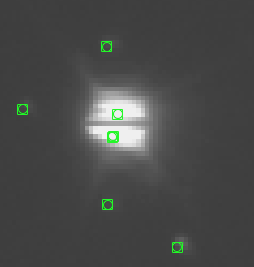Verification Datasets telecon
Attendees: Simon, David, Colin
Regrets: Simon
Colin:
- made matching run much faster, but not always correct
- takes the top 50 of ref catalog and similar for observed and matches them,
but not always overlapping - bumped up to 150, but it will always find a match even if its wrong because there are so many stars
- added something where you can enter where you think the saturation level is
but it still didn’t work well - uses shape to match up stars
- on warping the chips were overlapping, definite sign the WCSs are bad
- good QA test, does this focal plane make sense
- these are UW issues, has to work with Level 1 on the spot in 60s deadline
- maybe see how astrometry.net handles it
- could the shape algorithm be generalized to 3-dimensions and include magnitude, would be nice
but could be hard to implement
David:
https://confluence.lsstcorp.org/display/SQRE/COSMOS+DECam+data+reduction
- reran processCcdDecam on the COSMOS using PSFEx instead of PCA, and ran my ubercal program
on the data and then measured scatter for objects across multiple visits - the results are mixed. The photometric scatter is better for g- and r-band, similar
for i-band, u-band and astrometry, but worse for z-band - not sure why z-band is worse
- Colin: why is z-band worse, maybe galaxies could be coming in and contaminating things
- [CORRECTION! After the meeting I double-checked the un-ubercaled photometric scatter plots and found that it was substantially better for the z-band, for both PCA and PSFEx (see the confluence page). For some reason my ubercal routine got messed up for the z-band. I double-checked the other four bands and the ubercaled version was always better than the un-ubercaled version (especially for z-band). So the conclusion is that PSFEX is always better or of similar quality to PCA and I recommend PSFEx be made the default.]
